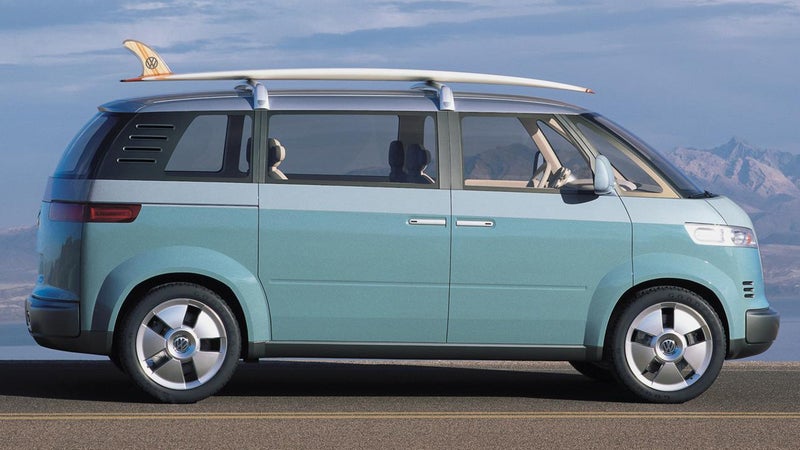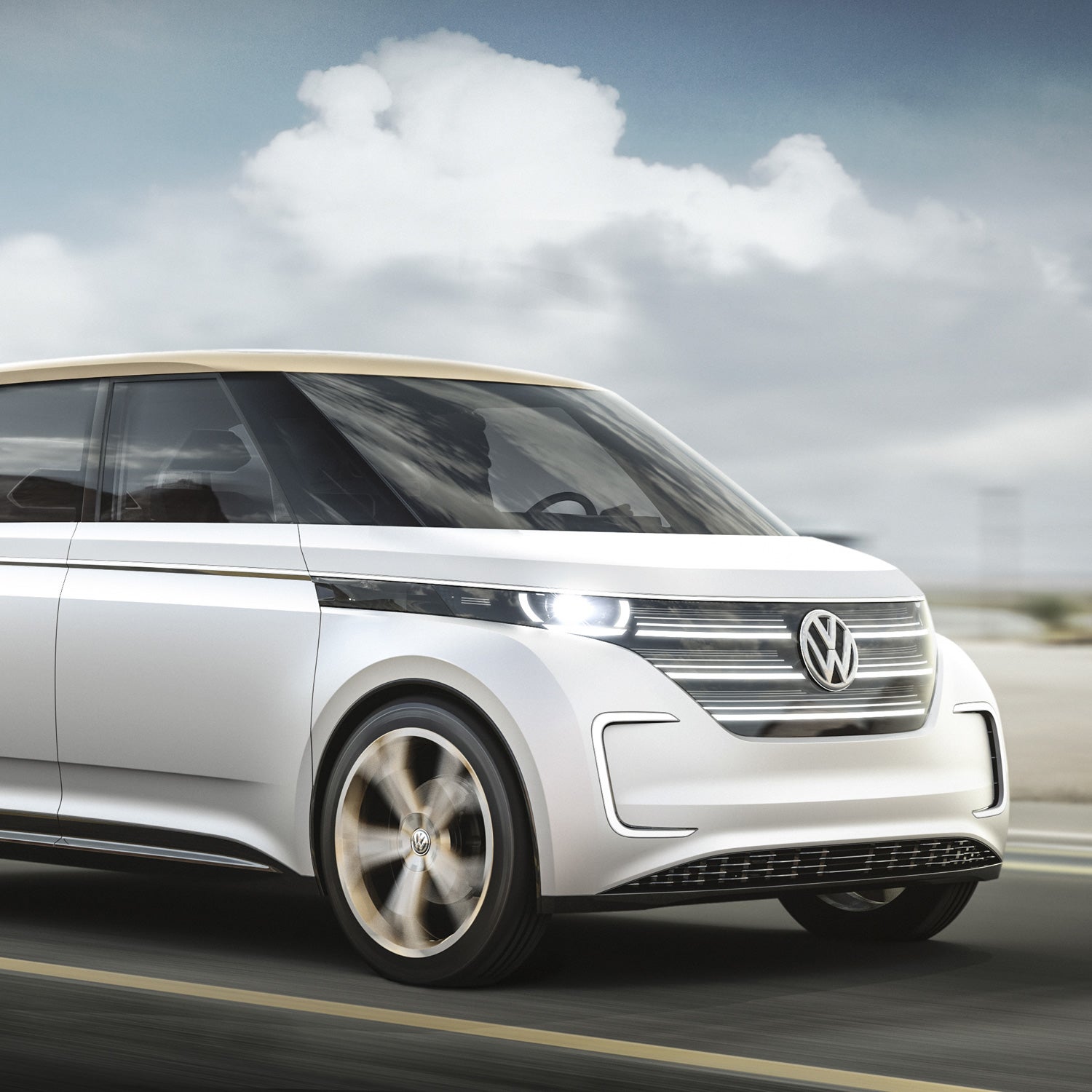A couple of weeks ago, I stopped at outside San Luis Obispo to discuss upgrading my 1991 Volkswagen Vanagon Westfalia camper. Founded over a decade ago by a VW fanatic named Lucas Valdes, GoWesty’s 46 employees have created a sort of ground zero for the #vanlife movement—a full-on skunkworks, with engine upgrades, suspension components, electronic and liveability innovations unimagined when VW’s American campers were still rolling off the assembly line more than a decade ago. Drooling over a mud-splattered, 25-year-old, four-wheel-drive Syncro Westy they were working on, I asked project manager Ted Ingle about reports that VW planned to unveil a new camper van at the Consumer Electronics Show in Las Vegas this week. “We’re a little nervous about it honestly,” he replied.
I could see why. Volkswagen hasn’t sold campers in the United States since 2003. No other American manufacturer has offered a van camper with a classic poptop, either (a poptop is the sleeping area that pops out of the top of the van and allows you to stand up to cook breakfast or change into a wetsuit). Americans have thus held onto their VW’s, relying on vendors like GoWesty to keep them alive. In other cases they’ve migrated to expensive or a small handful of options from other manufacturers.
Flash forward to this week. Having now seen the Budd-e, which was unveiled Tuesday, I’m guessing Ingle has breathed a sigh of relief. Despite VW press releases and a slick retro video proclaiming the dawn of a new camper or Microbus, the VW Budd-e is positively neither.
So what is it? Well, judging by VW’s , it’s an electrified cross between a Honda Element, Kia Soul, Tesla, an iPad, and . It’s cute in a futuristic iMac meets Tron sort of way, with sweeping, sturdy lines, neon and LED light bars, and a cool slide-out rear storage area. There’s a ton of interior room, thanks to a floor-level mounted battery pack that also gives a super low center of gravity and promises upwards of 300 miles on a charge. It will feature all wheel drive, thanks to electric motors front and back, and it looks like it may even have—or have room for—a solar panel in the roof. There are serious safety features, too, including a high-resolution camera and a Star Wars-esque 3D-map-based collision avoidance system.
Budd-e seems to mark VW’s final exit from the traditional camper van market here in the U.S.
In the driver’s seat, it’s a technological tour de force as well. You just swipe at the air for a door handle, and, thanks to ludicrous connectivity with the so-called Internet of Things, Budd-e will let me monitor my front-door camera and unlock the door for friends if I’m not home. One spokesman for LG described the following scenario. “You get into your car, your home will go into ‘away’ mode, putting appliances into eco-friendly modes and activating the security system. The home will be ready for your return by understanding the time of arrival through the car’s navigation system. It will be the perfect temperature, your favorite music will be playing and your robot vacuum cleaner will have run.”
In short, Budd-e could be the Big Brother you never had.

But here’s the thing: While Budd-e might be a game changer in the world of electric transportation, it’s a disappointment to VW lovers like me who hoped for a simple, functional, iconic people-mover that actually hearkened back to VW vans of the past. Back in 2001, VW perfectly captured this retro-future aesthetic when it unveiled an updated concept. To the disappointment of millions, that van was canceled. Budd-e seems to mark VW’s final exit from the traditional camper van market here in the U.S. (You can still buy a regular old camper van like they've always made in Europe.)
I, along with many people, love VW vans of the past because they were built on the promise of freedom, self-reliance, adventure, and the wonders of the world beyond the windshield. Models like the Microbus and Vanagon were engineered with particular brilliance—their cab-forward designs featured cavernous interiors and seats that turned into comfy beds. Plus, they were easy to fix. The best models, of course, were the campers that offered rotating seats, a stove, sink, refrigerator and that iconic poptop bed. These vehicles were infused with the soul of their sandal-wearing, backpack-toting Teutonic designers. Across the pond, they would come to personify America’s own wanderlust, inspiring a fierce devotion, hell, an entire movement, that grows to this day. Budd-e unfortunately offers none of these things, and likely never will.
Chris Dixon is the author of . He’s owned five VW vans and has written about them for ���ϳԹ��� and The New York Times.����


